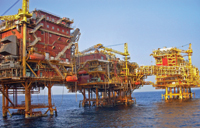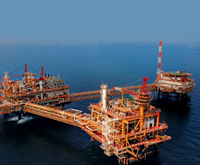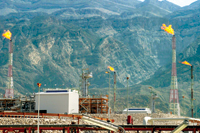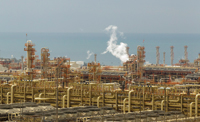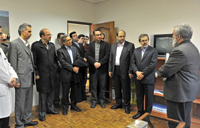
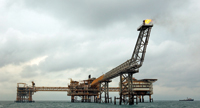 Most of Iran’s discoveries have been related to gas fields
Most of Iran’s discoveries have been related to gas fields
IRAN has discovered oil and gas reserves valued at up to $400 billion in the first nine months of the current Iranian calendar year which started on March 20, 2012, Irna quotes National Iranian Gas Company managing director Ahmad Qalebani as saying.
In recent years, most of the discoveries have been related to gas fields, but this year most of them are related to oilfields, he adds.
The Mehr News Agency quotes former Iranian Oil Minister Rostam Qasemi as saying that Iran has discovered a huge oilfield shared with Iraq and a large gas field shared with Turkmenistan.
“It is possible that the oilfield also contains natural gas,” he notes.
He says that since the past Iranian calendar year, over two billion barrels of in-situ crude oil reserves have been discovered across the country.
According to BP’s annual statistics, Iran’s gas production (excluding flared and recycled gas) in 2011 was 153.3 billion cubic metres (some 420 million cubic metres per day), while the consumption volume was 151.8 bcm in 2011, indicating a 1.5 bcm negative balance.
In December, Iran’s deputy oil minister said that Iran’s proven crude oil and natural gas reserves are worth around $37 trillion.
Reserves include 100 billion barrels of crude oil, 94 billion barrels of condensates and a 207 billion barrel equivalent of natural gas, he explains.
Iran’s daily gas output is projected to hit 1.4 bcm by 2015. Iran ranks fourth worldwide with 155 billion barrels of recoverable oil reserves after Venezuela, Saudi Arabia and Canada. With 34 trillion cubic metres of natural gas reserves, Iran has the world’s second largest natural gas reserves after Russia.
Meanwhile, the largest natural gas liquid (NGL) plant in the Middle East has come on streamat Iran’s Siri Island, located in the Gulf, Irna reported.
The Siri NGL project includes the Siri to Qeshm pipeline, Siri to Kish pipeline, Siri NGL plant and Kish gas pressure boost station at a total cost of $500 million.
The NGL project will save Iran around $5-7 million per day out of not burning gases associated with oil. The NGL plant at Siri Island will produce 1,400 barrels of gas condensates, 1,500 barrels of pentane and 4,000 barrels of butane and 8,000 barrels of propane per day.
In September 2012, National Iranian Gas Company’s managing director Javad Owji told the Mehr news agency that Iran will implement a plan for putting out flares at gas refineries by the end of the end of the fifth five-year development plan (March 2016), aiming to reduce energy consumption at gas refining facilities.
He added that 25 million cubic metres of gas will be saved at gas refining units.
Associated gases can bring benefits for the country, but they are flared up and burden huge losses on the nation, instead. Some 40 million cubic metres of associated gas at oilfields are burnt daily.
Iran has allocated $2 billion to collect associated gas at the Kharg and Bahregan oil regions, the deputy oil minister for engineering affairs said in November 2011.
Hamdollah Mohammadnejad told Shana News Agency that the sum will be spent to collect 17 million cubic metres of associated gas.
He adds that different projects worth around $500 million have been developed for collecting up to 99 per cent of associated gases.
Some $15 bcm of associated gas is burnt at Iran’s oilfields, bringing the country to an approximate $3 billion loss annually.
Since 2001, Iran’s annual imports of gas have been more than exports by nearly 71 bcm on average, the Pana news agency reported. Iran is the second major holder of gas deposits in the world.



















































































